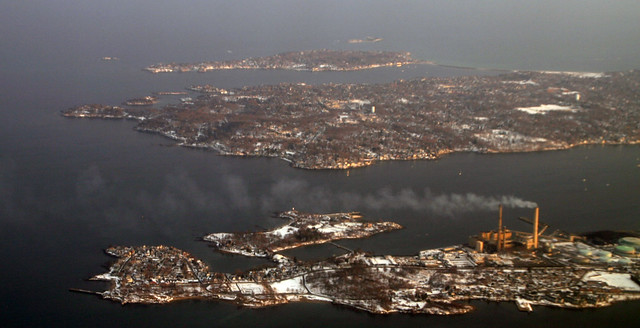PBS has recently been broadcasting a long documentary series called
National Parks: America's Best Idea. I haven't seen it, but apparently one of the co-producers, a fellow named Dayton Duncan, took it upon himself to visit every one of the nation's 58 national parks as a lifelong project. This effort was chronicled in an article headlined
Collect 'Em All, published in the July-August edition of the Sierra Club's magazine.
"Collect 'Em All"?
In response, Utne Reader published a
good critique by its senior environmental editor, Keith Goetzman. "Park bagging," the act of collecting visits to every park, requires a lot of gasoline and a lot of vacation time, he points out, which makes it an elite and environmentally-unfriendly pursuit.
But his last point is his best one: "The “collect ’em all” mentality goes against a better, nobler impulse, which is to get to know the land intimately," he writes.

When Jess and I worked in the White Mountains of New Hampshire, we encountered hundreds of "peak baggers" trying to collect all 46 of the state's 4000-foot mountains. Most of them were total douchebags, although, for the sake of full disclosure, I have to admit that I myself climbed the 46 peaks through the course of high school. But back then, I also thought that Ayn Rand was a good writer, so there you go.
Grand Canyon National Park, from Wikimedia Commons.Anyhow, I have lots of stories about New Hampshire peak baggers. Like the crowd of 20 people that showed up at Zealand Falls Hut one bitterly cold and windy Saturday in January, dead-set on finishing a 20-mile loop to "bag" Guyot and Bondcliff mountains with their huge newfoundland dog, Brutus.
Brutus, they told me, was going to be the first dog to "bag" the 46 peaks in the winter season. This was very important to them. I responded that there were 60 mile an hour winds above treeline, which meant that their planned itinerary would leave them exposed to negative-50 degree windchills for several miles on the ridge. "Don't be stupid," to paraphrase.
They opted to be stupid, of course. They were too late coming back to stop by the hut again, but I heard later through the grapevine that they'd had a miserable trip, and they'd come quite close to leaving a big dog's frozen corpse on the ridge.
Safety and common sense aside, what's really problematic about the baggers' attitude is how it reduces these places - mountain peaks or national parks - to petty consumption items, things to be ticked off on a list, like beanie babies.
This is entirely antithetical to environmentalism, which requires a nuanced and thoughtful understanding of the natural resources and landscapes that surround us.
The
National Parks themselves are fetish objects for most environmentalists. Sure, I like them too. Their spectacular landscapes really do inspire a lot of people, including a lot of legendary environmental thinkers like John Muir.
But the National Parks are a lousy place to understand our modern society's real relationship with nature. They don't really offer any lessons about where we get our electricity, or our drinking water, or the raw materials that the Chinese use to forge our consumer goods. Instead, the National Parks offer us an unrealistic vision of the way environmentalists wish things were - a pretty backdrop without any people in it. At their worst (as when the federal army forcefully exiled native tribes like the Blackfoot from parks like Yellowstone and Glacier), the parks themselves could be thought of as costly consumption items tailor-made for "environmentalists."
Organizations like the Nature Conservancy are focused on acquiring land for the cause of environmentalism; hikers acquire mountain climbs; RVers acquire National Park passport stamps. But an environmentalist ethic that's focused on acquisition is an ethic that can not and will not address the fundamental environmental crises of our times.






















